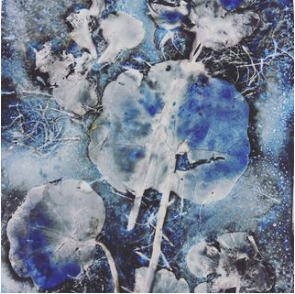What is oil painting?
Oil painting is a type of painting produced using oil-based paints. It involves the use of pigments that use a medium for drying oil as the binder and painting with them on a substrate such as canvas. Oil painting produces excellent tones and colors. It can also create both satisfactory liner treatments and crisp effects in a painting.
Oil painting isn’t only about the paint. An essential part of controlling it comes down to your use of a painting medium, which is typically a mixture of solvent and oil used to modify the paint and make it behave in different ways.
Cold wax in oil painting
Cold wax adds body, transparency, and depth to the oil paint. It also speeds up drying time, increases the paint’s workability, and does not require the special ventilation of encaustic.
Additionally, cold wax mediums mix easily with other media like oil sticks, chalk pastels, powdered charcoal, marble dust, dry pigment, and chalk. The use of heat is not necessary when working with this wax medium, as it dries through solvent evaporation (Gamsol) rather than the cooling of the wax, as in encaustic painting. This wax medium is also referred to as "cold wax printing" and "cold wax medium." The soft wax becomes as dense as a beeswax candle as the Gamsol evaporates from the medium.
Cold wax oil painting
The cold wax medium in oil paints is extensively used in the experimental, almost sculptural painting style known as "cold wax painting." Cold wax and oil paint are combined by artists to produce thick, layered, and textured artworks. It makes use of experimental techniques, such as brayers, stencils, and textural components like bubble wrap or wire screens.
Although artists use cold wax pigment alone, it is most often seen in combination with oil paint. Typically, cold wax paintings feature lots of texture as the medium allows artists to build up layers, scrape back color, and create glazes. Unlike encaustic, cold wax painting does not require the use of heat.
How cold wax is involved in oil painting
The sensation of oil painting is drastically altered with the use of cold wax. Oil paint can thicken and become velvety matte with the help of cold wax. Oil painting incorporates the medium in a variety of ways, such as the following:
- Mixing in the oil painting for more body and increased workability
Cold wax and oil paint work together beautifully. When combined, the medium gives the oil paint more body and increased workability. The mixing ratio one uses ultimately comes down to personal experience. However, a good place to start is a simple 50:50 ratio. The more cold wax one uses in the mix, the more translucent the paint will be.
- Mixingwith powdered pigments to create paste-like, wax-based paint
Cold wax is combined with powdered pigments to create an oil paint that has a paste-like consistency and is based on wax. When combined with wax, colours typically don't shorten the material. You'll note that the wax changes during mixing, becoming harder, less creamy, and occasionally slightly gritty. Painting could be done with the first mixture, but if you'd like your paint to be a little thinner, you can add a few drops of wax solvent.
- Creation of mixed media collages
Cold wax techniques enable the creation of exciting mixed-media collages. This is an aspect of mixed media art that cold wax painting for beginners courses usually offer, besides others like cold wax abstract paintings.
To create mixed-media collages using cold wax, you apply the medium in layers where you can trap all kinds of things. To create a sculptural piece with lots of texture, try layering pigment powders between the layers and adding small glass beads or collage materials.
- Adhesive to stick down decorative papers in an oil painting
You will learn how to use cold wax to adhere ornamental papers between the layers of your oil painting when studying cold wax oil painting techniques. To achieve the greatest results while using paper, go with lightweight varieties.
- Carving patterns and texture into a paint layer
Once applied to canvas, cold wax gives oil paint a thick texture that is simple to carve into. You might try using a paintbrush's handle end or palette knives to scratch into the surface. Additionally, you might try with other carving implements to observe the variety of markings you could make.
Learn more about the involvement of cols wax in oil painting
The use of cold wax in oil painting is an intriguing topic that many artists want to learn more about. You can also use cold wax to seal other mediums, including watercolor and pencil drawings. For more information and assistance about this, you could contact Art and Success using the feedback dialog provided at the end of this page.





Comments